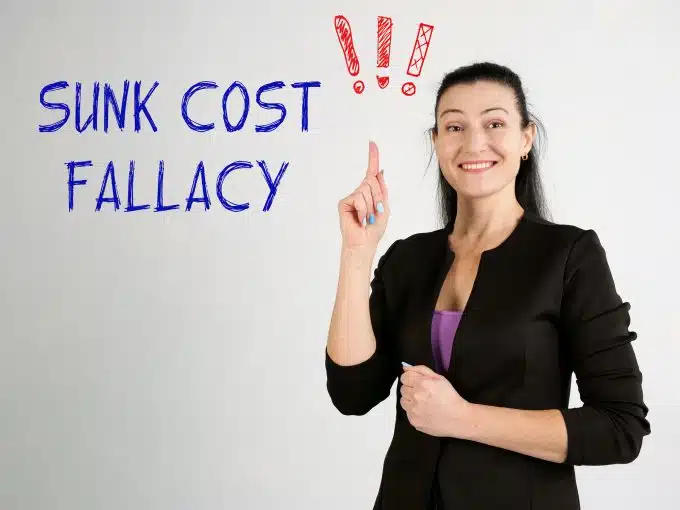
The Sunk Cost Fallacy in Sales
The Sunk Cost Fallacy in Sales: How to Recognize and Avoid It
In the world of sales, making informed and rational decisions is critical for success. Yet, even the most experienced professionals can fall prey to cognitive biases that skew their judgment. One such bias is the sunk cost fallacy, a common psychological trap that can hinder effective decision-making. In this blog post, we will explore what the sunk cost fallacy is, how it manifests in sales, and strategies to avoid it.
What is the Sunk Cost Fallacy?
The sunk cost fallacy occurs when individuals continue to invest in a decision based on the cumulative prior investment (time, money, resources) rather than evaluating the current situation and future potential. The core of this fallacy lies in the erroneous belief that past investments justify continuing a course of action, even when it no longer makes sense. So understanding the sunk cost fallacy in sales is pretty important.
How the Sunk Cost Fallacy Manifests in Sales
-
Persisting with Underperforming Products
Sales teams may continue to promote and sell products that are not meeting sales targets because of the significant resources already spent on development and marketing. Instead of cutting losses, they double down, hoping to recoup investments.
-
Chasing Unproductive Leads
Sales representatives might persist with prospects who show minimal interest or have a low probability of conversion simply because they have already spent considerable time and effort on them.
-
Sticking with Ineffective Strategies
Companies may cling to outdated sales strategies or technologies due to the substantial investments made, despite clear indications that newer approaches would yield better results.
-
Reluctance to Change Sales Tools
Sales teams might resist adopting new CRM systems or tools, even when current systems are inefficient, because of the time and money already invested in training and implementation.
The Consequences of the Sunk Cost Fallacy
Falling into the sunk cost trap can have several detrimental effects on sales performance:
-
Resource Drain
Continuously investing in failing initiatives depletes resources that could be better spent on more promising opportunities.
-
Missed Opportunities
Clinging to past investments can cause businesses to overlook new and potentially more profitable ventures.
-
Decreased Morale
Persisting with strategies that don’t yield results can demoralize sales teams, leading to decreased motivation and productivity.
Strategies to Avoid the Sunk Cost Fallacy in Sales
-
Objective Assessment
Regularly evaluate all sales initiatives based on current performance data and future potential, rather than past investments. Make decisions based on objective metrics and KPIs.
-
Encourage a Growth Mindset
Cultivate a company culture that values learning and adaptability over sticking with familiar but ineffective methods. Encourage teams to view sunk costs as learning experiences rather than losses.
-
Set Clear Benchmarks
Define clear performance benchmarks and decision points where initiatives are re-evaluated. If an initiative is not meeting predefined criteria, be prepared to pivot or abandon it.
-
Promote Open Communication
Foster an environment where team members feel comfortable discussing and challenging ongoing strategies. Diverse perspectives can help identify when the sunk cost fallacy is at play.
-
Regular Training
Provide training on cognitive biases and decision-making strategies to help sales teams recognize and avoid the sunk cost fallacy. Educating employees about common biases can empower them to make more rational choices.



